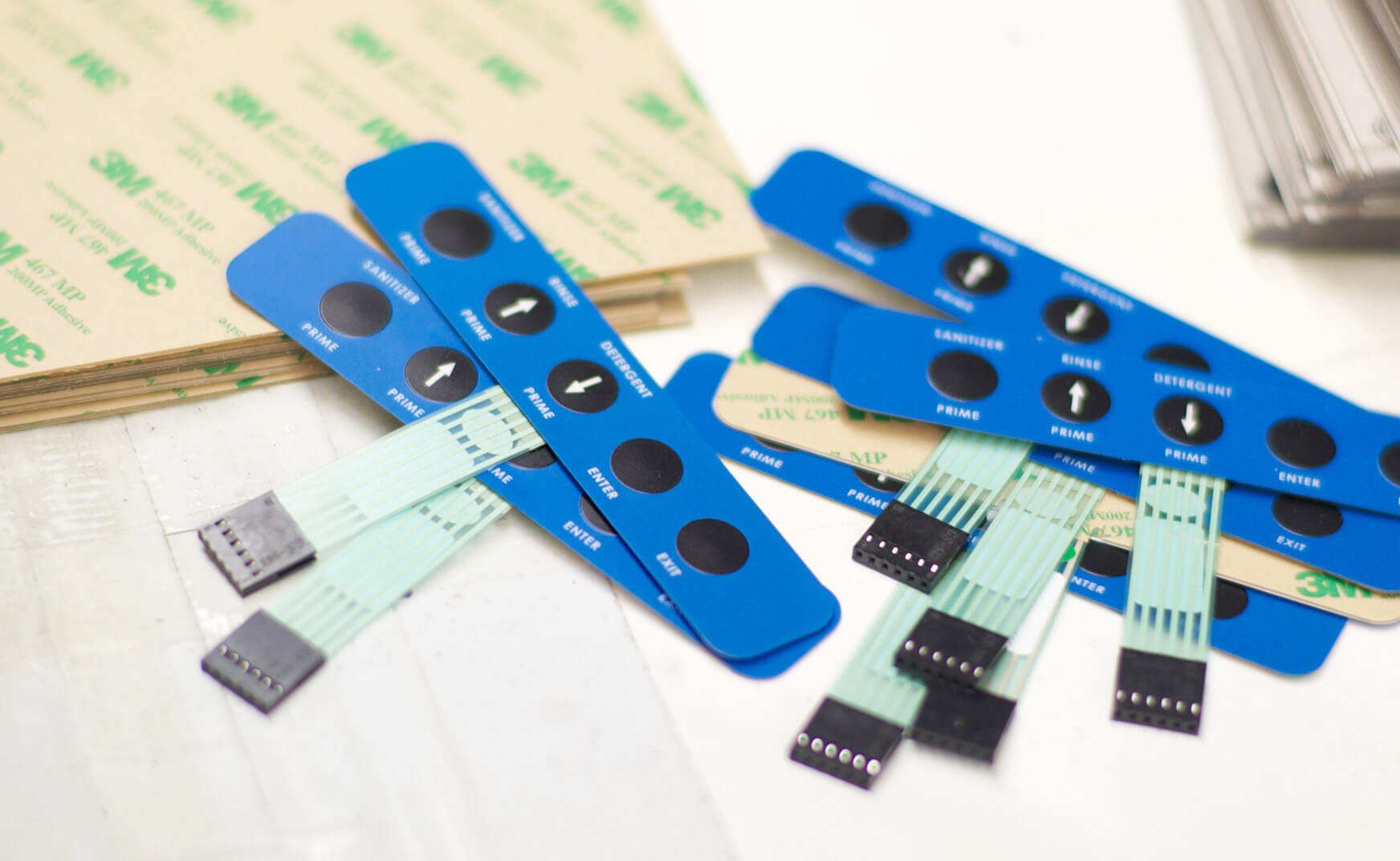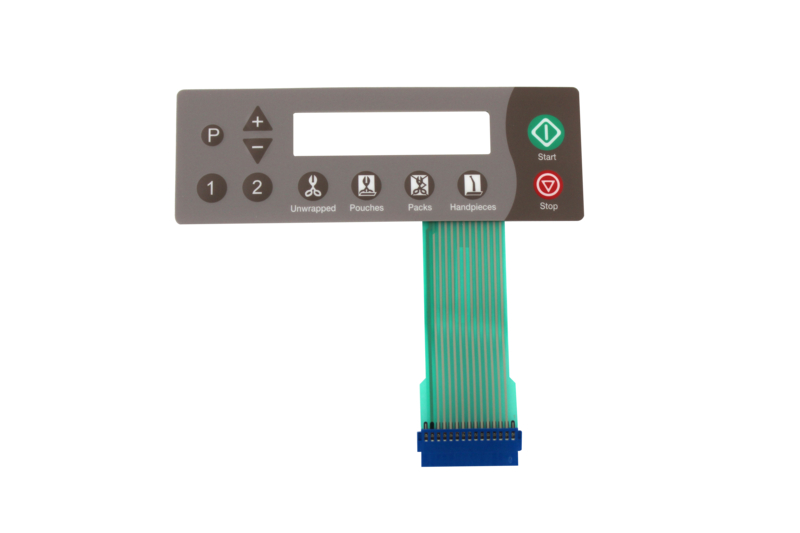The services offered by a qualified membrane switch manufacturer go beyond standard-level production.
The services offered by a qualified membrane switch manufacturer go beyond standard-level production.
Blog Article
Everything About Membrane Change: Understanding Its Layout and Performance
When you think of the control interfaces in modern devices, membrane layer switches usually come to mind. These components are extra than simply buttons; they mix style and performance effortlessly. Recognizing how they work and what makes them effective can alter your point of view on day-to-day electronics. Yet, there are subtleties to their layout and performance that you could not understand. Let's explore what collections membrane layer switches over in addition to various other control systems.
What Are Membrane Layer Switches?

Their seamless nature makes them very easy to clean and resistant to dirt and moisture, an essential function in many environments. Membrane layer buttons can additionally be tailored relating to form, size, and graphics, enabling makers to develop special user interfaces tailored to details items. And also, they're light-weight and thin, which assists in minimizing the general bulk of gadgets. Generally, membrane layer buttons play a substantial duty in improving user experience throughout a wide variety of applications.
Exactly How Membrane Switches Work
When you press a trick on a membrane layer button, it triggers an uncomplicated yet efficient mechanism. The top layer, commonly made of flexible product, pushes down onto a conductive layer underneath it. This action bridges the space between conductive traces, completing an electric circuit. As soon as the circuit shuts, it sends out a signal to the gadget's controller, which translates your input.
You'll see that the tactile comments differs based on the switch layout, providing either a soft click or a much more noticable feedback. As soon as you launch the secret, the membrane layer go back to its initial setting, resuming the circuit and stopping the signal. This procedure takes place almost instantaneously, guaranteeing a responsive individual experience.
Membrane layer switches are popular as a result of their durability and resistance to dirt and wetness, making them suitable for various applications, from house home appliances to clinical devices. Recognizing this operation assists you appreciate their prevalent use.
Trick Parts of Membrane Layer Buttons
Understanding the essential parts of membrane layer switches is fundamental for realizing their performance and style. At the core, you'll discover the visuals overlay, which offers the visual interface for customers. Below that, there's a spacer layer that divides the circuit layers, making certain that they do not make call until pushed. The circuit layer is where the magic happens; it is composed of conductive traces that finish the circuit when you press the switch. One more vital component is the adhesive support, enabling the button to stick to surface areas safely. Ultimately, the safety layer shields against environmental variables and put on, expanding the switch's lifespan. Each component plays a substantial duty in guaranteeing trusted performance and user interaction. By recognizing these parts, you'll gain understanding right into just how membrane changes operate and their value in various applications.
Products Utilized in Membrane Change Design
The efficiency and durability of membrane switches greatly depend upon the materials used in their design. You commonly encounter polyester and polycarbonate as main substrates as a result of their outstanding stamina and flexibility. These products stand up to scratches and chemicals, making them perfect for requiring settings.
The conductive layers usually utilize silver or carbon, picked for their reliability and conductivity. membrane switch manufacturer. Silver offers exceptional efficiency, while carbon is an economical alternative. For the overlay, you might consider a matte or shiny surface, relying on your aesthetic needs and customer experience
Make particular to pick adhesives that withstand environmental variables like temperature level and humidity. Picking the right materials will guarantee your membrane layer button stands the examination of time.
Layout Factors To Consider for Membrane Layer Buttons
While creating membrane buttons, it's vital to take into consideration various aspects that affect their performance and individual experience. Beginning by concentrating on the layout and switch size; make sure they're user-friendly and easy to browse. Think about the tactile feedback you desire to supply-- will customers need a visible click or a softer touch? Additionally, consider the products you'll make use of, as they'll impact sturdiness and appearances.
Validate your style suits ecological elements, like moisture or temperature level variations, which might impact efficiency. By carefully taking into consideration these components, you'll produce a membrane layer switch that boosts usability and complete satisfaction.
Applications of Membrane Layer Switches
Membrane layer buttons are flexible components discovered in different applications, from industrial tools to consumer electronics. You'll see their influence in devices that need durable user interfaces and in tools that gain from sleek layouts. Recognizing these applications helps you appreciate the functionality and practicality of membrane buttons in day-to-day innovation.
Industrial Equipment Use
When you're seeking to boost the functionality of industrial Visit Website devices, membrane layer buttons provide a reliable service that integrates sturdiness with straightforward design. These switches are ideal for harsh settings, offering resistance to dust, moisture, and chemicals. You'll locate them in control panels for making makers, heating and cooling systems, and clinical tools, where accuracy and responsiveness are crucial. Their reduced profile suggests they fit perfectly into different tools, conserving important space while preserving ease of usage. With personalized graphics and backlighting choices, you can create an instinctive about his interface for operators, boosting effectiveness and safety and security. Plus, their long life-span lowers upkeep costs, making them a smart investment for your industrial applications. Embrace membrane buttons to streamline your operations and improve overall efficiency.
Customer Electronic Devices Combination
In the domain name of customer electronic devices, membrane layer switches play an essential function in improving customer communication and device capability. Membrane layer switches also assure sturdiness and resistance to dust and moisture, extending the life-span of your electronic devices. By picking membrane layer switches, you boost not just the functionality but likewise the design of your tools, making everyday communications smooth and pleasurable.
Advantages and Downsides of Membrane Switches
While membrane layer switches use a range of advantages, they also come with some downsides that you need to take into consideration. One considerable benefit is their portable layout, making them perfect for space-constrained applications.

Membrane layer buttons can have a shorter life expectancy contrasted to mechanical switches, particularly under hefty usage. They can likewise be much less responsive, which could affect user responses during procedure. Stabilizing these pros and disadvantages will certainly aid you identify if membrane switches are the right fit for your task.
Frequently Asked Inquiries
For How Long Do Membrane Switches Over Usually Last?
Membrane switches over usually last between 5 to 10 years, depending upon usage and ecological conditions. You'll intend to assess elements like wear, exposure to dampness, and temperature level changes to assess their longevity properly.
Can Membrane Layer Changes Be Customized for Details Designs?
Yes, you can personalize membrane layer switches to fit details styles (membrane switch manufacturer). You'll have the liberty to select colors, forms, and layouts that match your task's requirements, guaranteeing they mix effortlessly with your general aesthetic
What Is the Cost Array for Membrane Change Production?
The price variety for membrane layer button manufacturing normally drops in between $1 and $10 each, relying on elements like layout complexity, amount, and materials. You can obtain quotes from producers to discover the most effective alternative.

Are Membrane Switches Water-proof or Immune?
Membrane layer buttons can be created to be water-proof or resistant, relying on products used and construction techniques. If you require them for damp environments, assure you specify those requirements during the style process.
Just How Do Membrane Layer Changes Compare to Conventional Switches?
Membrane layer buttons are normally thinner and more versatile than conventional switches, providing a streamlined layout. They're usually easier to cleanse and integrate, however may not provide the responsive responses you're made use of to with mechanical options.
Conclusion

Report this page